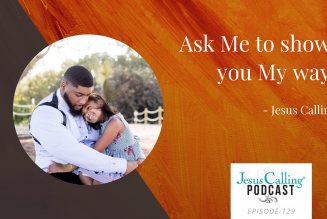
Scripture commands parents to teach their children God’s Word (Deut. 6:6–9; Eph. 6:4). Yet the potential obstacles to teaching the Bible to children, especially small children, are nearly endless. How do you hold their attention? How do you communicate the great mysteries of the faith in a way they can understand? How can you make this a habit when your time is pulled in so many directions?
I’ll address these questions indirectly by directly addressing another: what exactly do you teach your small children in order to instruct them in the faith?
Here’s my suggestion: pull a page from the seminary curriculum and teach them exegesis, biblical theology, and systematic theology.
“Whoa, whoa, whoa. You’re supposed to be making this easier, not harder!” I know. Hang in there.
Let’s take these one by one. By exegesis I simply mean reading and rightly interpreting the Bible. More on that later.
Biblical theology traces the unfolding shape of God’s purposes for his people from Genesis to Revelation. It shows us the act-by-act unfolding of the drama of redemption God is working in Christ.
And systematic theology is simply a coherent, orderly presentation of Scripture’s teaching about God and his works. Systematic theology draws together all that God’s Word teaches about himself, creation, sin, salvation, and so on—and sets forth the truth in clear, concise form.
Here’s how our family does this. When our oldest daughter had just turned one, we started reading her a section of The Big Picture Story Bibleevery night. When she was about two, we started teaching her to memorize a basic catechism. Around four, we started slowly reading through books of the Bible, beginning with the Gospels. Her little sister, younger by two and a half years, was just along for the ride at first, but is now doing her own catechism questions and listening during Bible time.
Do you see the pattern? The Big Picture Story Bible—and a few others like it—tells the whole story of Scripture as a single, sweeping narrative. Many kids’ Bibles focus every story into a simple moral lesson. These may have their place, but The Big Picture Story Bible does much more, helping kids grasp the major events from Genesis to Revelation: creation, the fall, God’s promise to Abraham, the Exodus, Israel’s possession of the land, God’s promise to David, Israel’s sin and exile, Jesus’ life and saving work, the birth and growth of the church, and the consummation of all things.
In other words, a story Bible like this teaches biblical theology. It introduces not only the main characters and stories in Scripture, but God’s saving purpose that runs from beginning to end.
A catechism, of course, is systematic theology for kids. It draws out the implications of the story. It teaches who God is, what he’s like, why he does what he does.
And there’s no substitute for simply reading Scripture together and talking about what it means—preschool-level exegesis. As you read, ask your kids basic questions to help them engage the text. Who are the main characters? What’s happening, and why? What does God want us to believe and do based on this?
Now, I’m a grade-A theology nerd, but I didn’t actually set out to found a preschool seminary in our home. The parallel only struck me after we’ve been doing this for a few years, and it struck me because of the way these three basic habits all reinforce each other and help our kids engage God’s Word. So, we recently read of Jesus’ promise to give the Spirit in our story Bible, and our older daughter exclaimed, “Dad, that’s where we are!”—meaning we’d just read of Jesus’ same promise to give the Spirit in John 16 in morning Bible. And when a character from the Old Testament is mentioned in one of the Gospels, she’ll often say, “Hey, I know him! He’s in my Bible!”
All told, this takes maybe fifteen minutes a day. Ideally we do all of this every day, but realistically we do most of it most days—maybe five days a week. We read about ten verses or half a chapter of Scripture at breakfast, along with catechism questions. And we read a story from the story Bible before bed. That’s it. But we can already see these habits radically shaping our kids’ minds, hearts, and lives.
We’ve had to shift our routine plenty of times when it just wasn’t working. We’ve found breakfast a good time for more active teaching since the kids have energy and, while they’re eating, are as close as kids get to being a captive audience.
Kids love structure, and they thrive on routine. One of the best things about this “seminary curriculum” approach is that you don’t have to think too much about it: just read the next few verses, teach the next few questions, read the next story.
Plus, the structure itself does a lot of explaining for you. Your kids won’t encounter the Trinity as an abstract puzzle to be solved, but as the Father, Son, and Spirit who work together to save us. And while they’ll ask questions you can’t answer, the catechism gives them plenty you can.
If this seems overwhelming, start with just one piece of the puzzle, like reading a story Bible before bed. If you can cement that one habit, consider building on it. When it comes to teaching kids the whole counsel of God, a little every day goes farther than you can imagine.
Bobby Jamieson is a PhD candidate in New Testament at the University of Cambridge. He is the author of Sound Doctrine: How a Church Grows in the Love and Holiness of God(Crossway, 2013).










